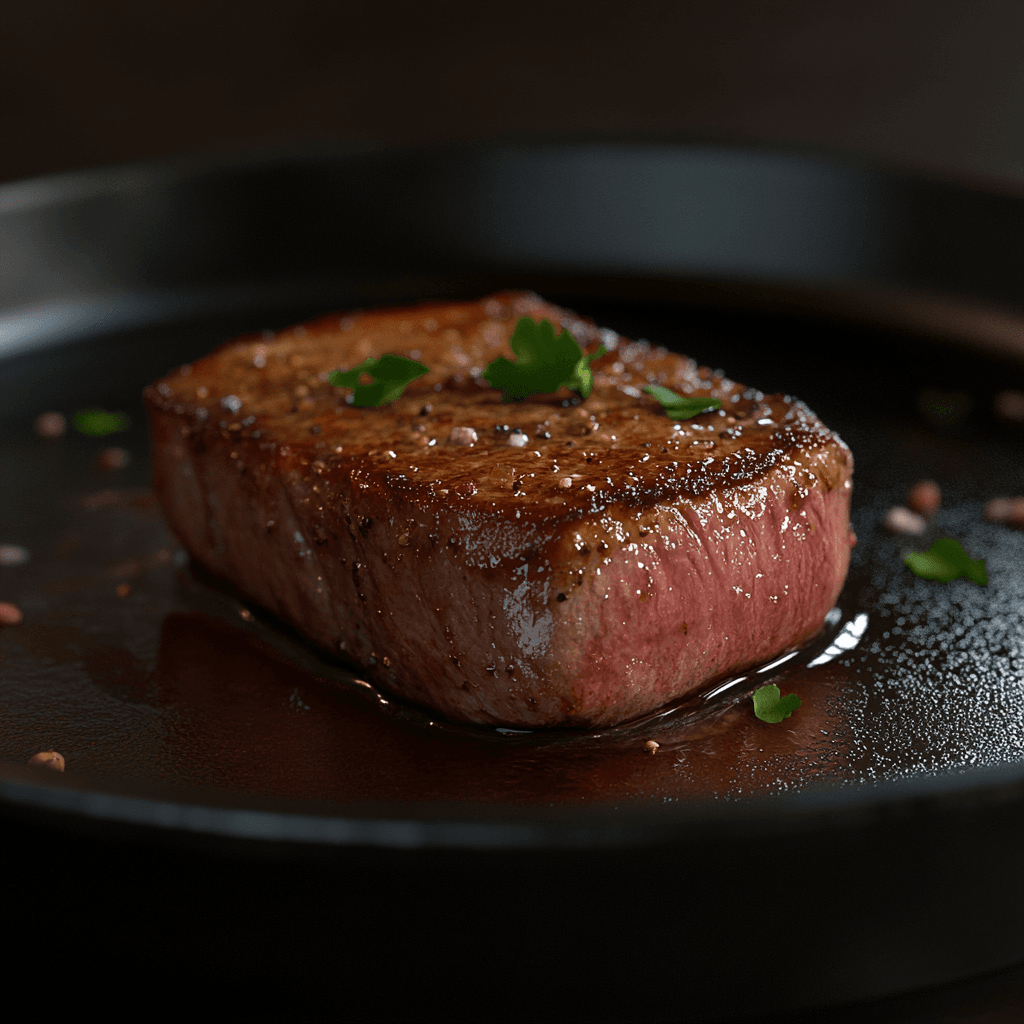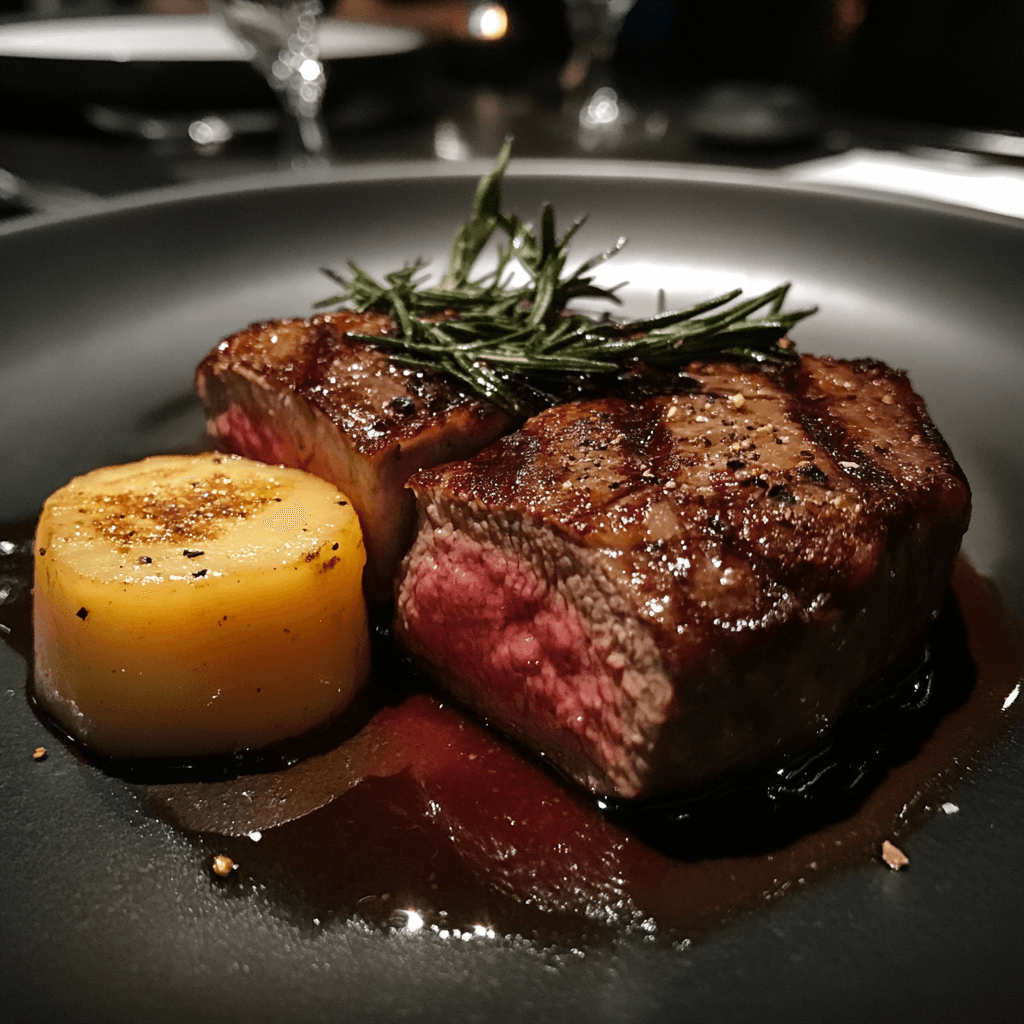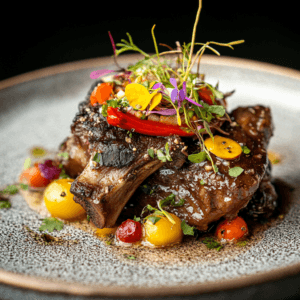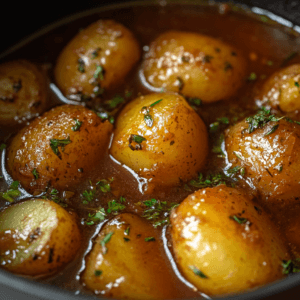Cooking a perfect steak is an art, and one of the best ways to achieve that perfect sear and juicy interior is by using a cast iron skillet followed by finishing the steak in the oven. This method is popular for its ability to create a golden-brown crust while keeping the inside tender and juicy, making it a favorite among professional chefs and home cooks alike. In this guide, we will walk you through the essential steps to cook steak in a cast iron skillet and oven.
Whether you’re a seasoned cook or just starting, you can master this technique with ease and enjoy a restaurant-quality steak at home. We’ll cover everything from choosing the right cut of steak to tips for achieving your preferred level of doneness. Let’s dive in!
What Makes the Cast Iron Skillet the Best Choice for Steak?
A cast iron skillet is widely considered one of the best tools for cooking steak. This is because cast iron can withstand high temperatures and retain heat extremely well, which is crucial for achieving the perfect sear. When you place a steak in a hot skillet, the intense heat creates a crispy, caramelized crust, locking in the juices and flavor. This crust is key to delivering a restaurant-quality steak at home.
Additionally, cast iron skillets distribute heat evenly, meaning the steak will cook uniformly. This even heat is especially important for thick cuts of steak, as it prevents the outside from burning while the inside remains raw. Moreover, cast iron skillets are incredibly durable and versatile. Once your steak has been seared on the stovetop, it can easily be transferred to the oven, where it continues cooking without losing any flavor.
Many professional chefs use cast iron because of its ability to handle high heat, and with the right technique, you can recreate their results at home. If you haven’t tried this method yet, you’re in for a treat!
Why Oven-Finishing Is Essential After Searing Your Steak
After you sear your steak on the stovetop, the next step is finishing it in the oven. Why is this necessary? The high heat of the oven allows the steak to cook evenly throughout without overcooking the outside. The direct heat from the oven ensures that the steak reaches your desired level of doneness while keeping it juicy and tender on the inside.
Without the oven, the exterior of your steak may become too charred or dry before the inside reaches the correct temperature. Furthermore, oven-finishing helps ensure that the steak cooks uniformly, so you won’t end up with a well-done crust and an undercooked center. The oven method helps you get perfect results consistently, whether you’re aiming for medium-rare or well-done.
It’s worth noting that the oven also allows you to control the cooking time and temperature more precisely than using just the stovetop. So, while the cast iron skillet gives you that amazing sear, the oven finishes the job, bringing out the best in your steak.
What Type of Steak Works Best for This Method?
When cooking steak in a cast iron skillet and oven, not all cuts are created equal. Some steaks work better with this high-heat method because they are tender enough to withstand the brief but intense searing process and the subsequent oven finishing.
Best Cuts for Cast Iron Skillet and Oven Cooking
- Ribeye: Known for its rich marbling, ribeye steaks are incredibly juicy and flavorful. The fat content in a ribeye ensures that the steak remains tender and flavorful even when seared at high heat. It’s one of the best cuts for cast iron skillet cooking.
- New York Strip: A leaner option compared to ribeye, but still full of flavor. New York strip steaks are ideal for skillet and oven cooking, as they cook quickly and evenly while retaining a satisfying texture.
- Filet Mignon: For those who prefer a leaner, more delicate steak, filet mignon is an excellent choice. Although it lacks the fat marbling of a ribeye, it’s incredibly tender and works beautifully with this method.
- T-bone or Porterhouse: These cuts are a combination of a New York strip and a filet mignon. They’re perfect for those who enjoy having two different textures and flavors in one steak. Due to their thickness, they benefit from the even cooking that cast iron and oven finishing provide.
Choosing the Right Thickness
When selecting your steak, make sure it’s at least 1 to 1.5 inches thick. Thicker steaks hold up better to searing and oven-finishing without overcooking the exterior. Thinner steaks may cook too quickly and end up dry.
Ingredients You Need for Perfecting Your Steak
Before you begin cooking, it’s essential to gather your ingredients. While the steak is the star of the show, there are a few simple ingredients and tools that can elevate your steak to the next level.
| Ingredient | Amount | Notes |
|---|---|---|
| Steak (ribeye, New York strip, etc.) | 1 piece, 1-1.5 inches thick | For optimal tenderness and flavor, choose a well-marbled steak. |
| Salt | To taste | Coarse sea salt or kosher salt works best for seasoning. |
| Black pepper | To taste | Freshly ground pepper adds a wonderful flavor to the steak. |
| High-heat oil (vegetable, canola) | 2-3 tbsp | Ensures a proper sear without burning. |
| Butter | 2 tbsp | Adds richness and flavor when basting the steak. |
| Fresh herbs (optional) | 1-2 sprigs | Rosemary, thyme, or garlic for flavoring. |
| Garlic (optional) | 2 cloves | Adds an aromatic touch when basting. |
Table of Contents
Tools Needed:
- Cast iron skillet: The key to getting that perfect sear.
- Oven: For finishing your steak and controlling doneness.
- Tongs: To flip and handle the steak safely.
- Meat thermometer (optional): Ensures the steak is cooked to your desired level of doneness.
Preparing Your Steak for Cooking
Now that you have all your ingredients and tools ready, it’s time to prep your steak. Proper preparation ensures that the steak sears well and cooks evenly.
Step 1: Season Your Steak
Start by seasoning your steak generously with salt and pepper. Salt draws out moisture from the steak, which evaporates and creates that flavorful, crispy crust when seared. Freshly ground black pepper adds a bit of heat and complexity to the crust.
Step 2: Let the Steak Come to Room Temperature
For the best results, let your steak sit at room temperature for about 20-30 minutes before cooking. A cold steak placed in a hot pan can lead to uneven cooking, so allowing it to warm up slightly ensures that it cooks more evenly.

How to Properly Sear Steak in a Cast Iron Skillet
Searing your steak correctly is one of the most important steps to achieving that perfect crust. Here’s how to do it right:
Step 1: Preheat the Skillet
Place your cast iron skillet over medium-high heat and allow it to heat for about 3-5 minutes. A well-heated pan ensures that your steak sears properly, creating a crispy outer layer while locking in the juices.
Step 2: Add Oil
Once the skillet is hot, add 2-3 tablespoons of high-heat oil like vegetable or canola oil. These oils are ideal because they can withstand high temperatures without smoking. Swirl the oil to coat the surface of the skillet evenly.
Step 3: Sear the Steak
Using tongs, carefully place the steak in the skillet, making sure it makes full contact with the surface. Allow it to sear without moving it for about 2-3 minutes. After this time, flip the steak to sear the other side for another 2-3 minutes.

Step 4: Sear the Edges (Optional)
For an even better crust, use tongs to hold the steak on its edges for about 1-2 minutes. This creates a flavorful sear all around the steak, ensuring no part is left undercooked.
Once your steak is seared on both sides and edges, it’s ready for the oven.
How Long Should You Put Your Steak in the Oven After Searing?
After searing, it’s time to transfer the steak to the oven to finish cooking. This allows the steak to cook evenly while preventing the outside from burning.
Preheat the Oven
Set your oven to 400°F (200°C). This temperature is perfect for finishing the steak while preserving its juiciness and tenderness.
Cooking Time
- For medium-rare: 4-6 minutes in the oven.
- For medium: 6-8 minutes.
- For well-done: 8-10 minutes.
Make sure to check the steak’s internal temperature using a meat thermometer to ensure you’ve achieved your desired doneness.

By following these steps, you’ll be able to cook a steak in a cast iron skillet and oven like a pro. But before we move on to more advanced tips and common mistakes, let’s explore the 3-3-3 rule for cooking steak—your ultimate guide to perfect steak every time.How to Cook Steak in a Cast Iron Skillet and Oven: A Step-by-Step Guide
The 3-3-3 Rule for Cooking Steak: A Foolproof Method
If you’re looking for a simple yet effective way to guarantee your steak turns out perfect, the 3-3-3 rule is a great place to start. This rule gives you a structured timeline to follow, helping you achieve the perfect steak with the ideal sear, texture, and flavor.
Understanding the 3-3-3 Rule
The rule is broken down into three stages, and it works particularly well for steaks that are about 1-inch thick. Here’s how it works:
- 3 Minutes of Searing on One Side: Begin by preheating your cast iron skillet to medium-high heat. Once it’s hot, place your steak in the skillet. Sear the first side for 3 minutes without moving the steak. This allows the surface to caramelize and form a golden-brown crust, locking in all the juices.
- 3 Minutes on the Other Side: After 3 minutes, flip the steak over and let it sear for another 3 minutes. This ensures that both sides get the same perfect sear, resulting in a crispy crust all around.
- 3 Minutes in the Oven: After the steak has been seared on both sides, transfer it to the oven. Set the oven to 400°F (200°C) and cook the steak for 3 minutes per half-inch of thickness. For instance, if your steak is 1-inch thick, cook it for 3 minutes; if it’s 1.5 inches, cook it for 4-5 minutes. The oven will help the steak cook through evenly, ensuring it reaches your preferred level of doneness.
This method is ideal because it allows you to control the cooking time and temperature with precision. The searing process builds flavor, while the oven ensures that the inside is cooked to perfection without overcooking the outside.
How Long Should You Put Your Steak in the Oven After Searing?
Once you’ve seared your steak, it’s time to finish it in the oven. However, the cooking time depends on your preferred level of doneness and the thickness of your steak.
Time and Temperature Guidelines
- For medium-rare steak: Cook for 4-6 minutes in the oven.
- For medium steak: Cook for 6-8 minutes.
- For well-done steak: Cook for 8-10 minutes.
These times are based on the steak being 1-inch thick. If your steak is thicker, you’ll need to extend the time by 1-2 minutes per additional half-inch.
Tip: To get the most accurate results, use a meat thermometer. For medium-rare, you want the internal temperature to be 130°F (54°C), medium is 140°F (60°C), and well-done is 160°F (71°C).

Common Mistakes to Avoid When Cooking Steak in a Cast Iron Skillet and Oven
While cooking steak in a cast iron skillet and oven is straightforward, it’s easy to make mistakes. Here are a few common ones to watch out for:
Mistake 1: Not Letting the Steak Rest
After removing the steak from the oven, it’s tempting to cut into it right away. However, cutting too soon will cause all the juices to escape, resulting in a dry steak. Let your steak rest for at least 5-10 minutes after cooking. This resting period allows the juices to redistribute throughout the meat, ensuring each bite is juicy and tender.
Mistake 2: Overcrowding the Skillet
Another mistake is overcrowding the skillet. If you add too many steaks to the pan at once, the temperature of the skillet will drop, and the steaks won’t sear properly. To avoid this, cook the steaks in batches, giving each one enough space to sear evenly.
Expert Tips for Perfect Steak Every Time
Achieving the perfect steak requires more than just following the recipe. Here are some expert tips to elevate your cooking:
Tip 1: Use Fresh Herbs and Garlic for Added Flavor
While salt and pepper are essential, adding fresh herbs like rosemary or thyme, and a couple of crushed garlic cloves to your steak can elevate its flavor. When searing the steak, throw the herbs and garlic into the skillet for a few minutes to infuse the meat with extra aroma and taste.
Tip 2: Sear with Butter for Extra Richness
For an even richer flavor, consider adding butter toward the end of the searing process. The butter will melt and add a luxurious texture to the steak’s crust. As the butter melts, spoon it over the steak for added flavor. This technique is often used in high-end restaurants and adds depth to the steak’s taste.
Tip 3: Make Sure the Steak Is at Room Temperature
Before you begin cooking, allow the steak to sit at room temperature for 20-30 minutes. Cold steaks can cause the pan’s temperature to drop, leading to uneven searing. Room temperature steaks cook more evenly and give you a better sear.
Pro Tips & Variations
While this method works beautifully for most cuts of steak, there are a few variations and additional tips that you can use to customize your steak:
Variation 1: Reverse Sear Method
The reverse sear method involves cooking the steak in the oven first and then searing it in the skillet. To do this, cook the steak in the oven at 250°F (120°C) for about 20-25 minutes (depending on the thickness). Once it reaches your desired internal temperature, sear it in the skillet for 1-2 minutes on each side to develop a beautiful crust.
This method works particularly well for thicker steaks, as it allows them to cook more evenly before achieving the perfect crust. The result is a steak that is evenly cooked from edge to edge with a crispy, flavorful crust.
Variation 2: Adding a Sauce
For an extra touch of indulgence, you can add a rich sauce to complement the steak. A classic option is a red wine reduction, which pairs beautifully with the rich flavor of the steak. To make this sauce, deglaze the skillet with red wine after cooking the steak, scraping up any browned bits from the bottom. Add some butter and fresh herbs, and simmer until thickened.
This adds a sophisticated finish to your steak and is sure to impress any guest.
FAQs About Cooking Steak in a Cast Iron Skillet and Oven
How to cook steak in a cast iron skillet and oven?
To cook steak in a cast iron skillet and oven, start by seasoning your steak with salt and pepper. Preheat your skillet on the stovetop and sear the steak on both sides for 3 minutes each. After searing, transfer the steak to a preheated oven at 400°F for 4-10 minutes, depending on your desired level of doneness.
How long should I put a steak in the oven after searing?
After searing, you should put your steak in the oven for 4-10 minutes, depending on its thickness and your preferred doneness. For medium-rare, cook for 4-6 minutes; for medium, 6-8 minutes; and for well-done, 8-10 minutes.
What is the 3-3-3 rule for steaks?
The 3-3-3 rule is a guideline for cooking steaks: Sear the steak for 3 minutes on each side in a hot skillet, then finish it in the oven for 3 minutes per half-inch of thickness. This method ensures a perfect crust and an even, tender interior.
How long to cook steak in the oven at 400 degrees?
At 400°F, cook your steak for 4-6 minutes for medium-rare, 6-8 minutes for medium, and 8-10 minutes for well-done, depending on the thickness of the steak.
Conclusion
Cooking steak in a cast iron skillet and oven is one of the easiest and most effective ways to achieve a perfectly cooked steak with a delicious, golden-brown crust and juicy interior. By following the tips and techniques outlined in this guide, you can confidently cook steak to your preferred level of doneness, whether it’s medium-rare, medium, or well-done.
Remember, resting the steak is key to maintaining its juices, and using the 3-3-3 rule will help you achieve a tender and flavorful result every time. With the addition of fresh herbs, butter, or a rich sauce, you can take your steak to the next level, impressing your guests and savoring every bite.
See more recipes in LUNCH category.


